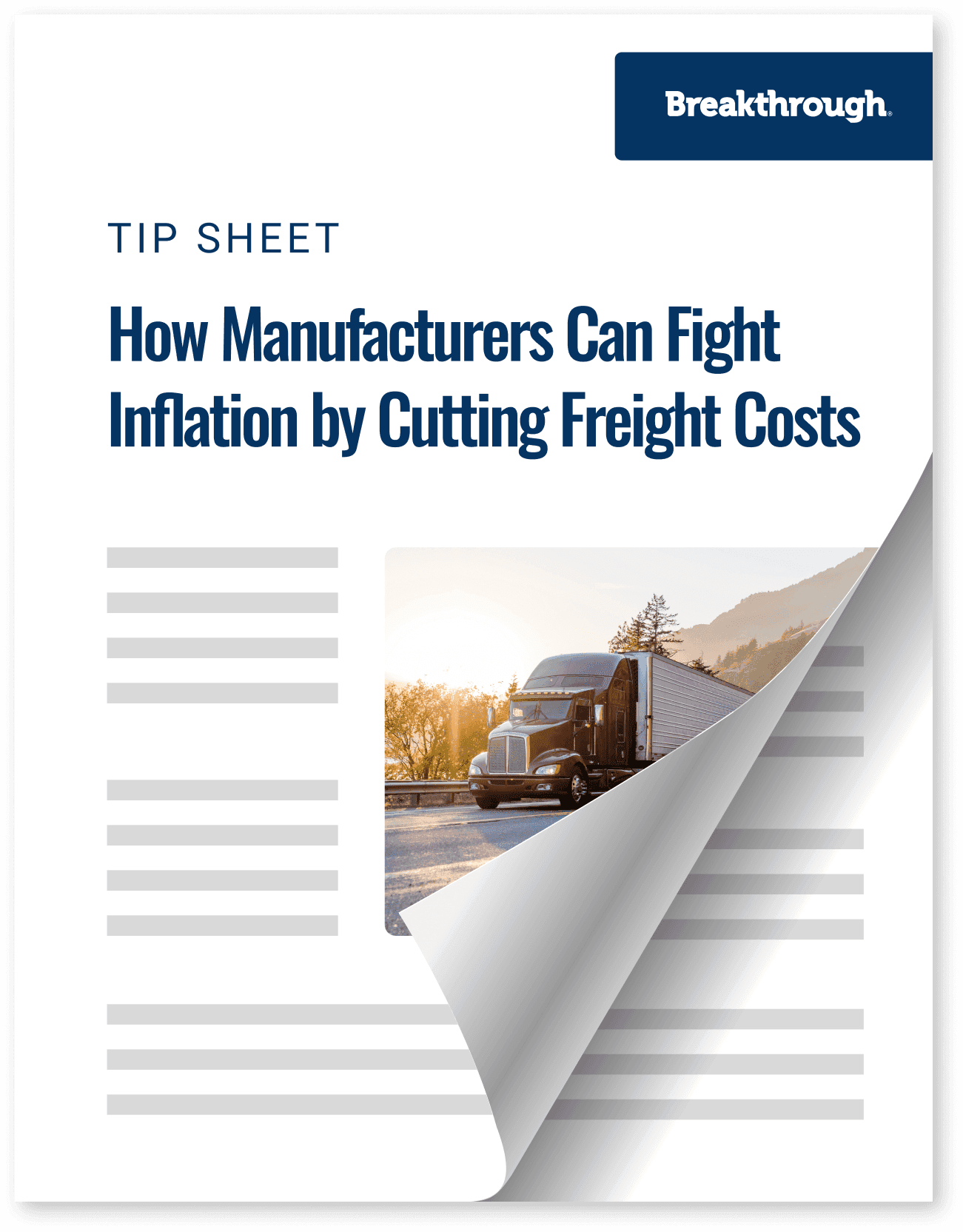Cómo pueden los fabricantes combatir la inflación reduciendo los costes de flete

Tendencias
Top Posts
Sostenibilidad y tecnología
Conozca el crédito fiscal 45Z para la producción de combustibles limpios
5 min de lectura
octubre 3, 2025
Eventos de mercado
¿Por qué se mantiene el precio del gasóleo cuando baja el del crudo?
6 min de lectura
octubre 2, 2025
Eventos de mercado
Preparación para las nuevas leyes de divulgación climática de California
5 min de lectura
septiembre 30, 2025
4 min de lectura
diciembre 11, 2023

Compartir:
Tabla de contenido
Revisa la tabla de contenido para ir directamente a la parte que estás buscando
A finales de noviembre, la Organización de Países Exportadores de Petróleo y su Alianza, comúnmente conocida como OPEP+ anunció su decisión de frenar la producción de crudo en aproximadamente 2,2 millones de barriles diarios (bpd) para el primer trimestre de 2024. Según el grupo, este acuerdo pretende "estabilizar y equilibrar" el mercado mundial del petróleo. Los recortes voluntarios fueron una ampliación de los recortes existentes de 1,3 millones de bpd realizados por Arabia Saudí y Rusia, y los 900.000 bpd restantes se distribuyeron entre Irak, Kuwait, Emiratos Árabes Unidos, Kazajstán, Argelia y Omán. Con estos recortes, la OPEP+ reduce ahora su producción en unos 5 millones de bpd, lo que representa aproximadamente el 5% del consumo mundial de petróleo. Profundicemos en los detalles de este acuerdo y en sus implicaciones para el mercado del crudo.
Es interesante observar que, a pesar del anuncio del aumento de los recortes de producción, el mercado no ha respondido con una presión al alza de los precios. De hecho, los precios del crudo han experimentado una continua presión a la baja desde el 30 de noviembre. Varios factores han contribuido a esta tendencia, entre ellos el escepticismo del mercado respecto a la eficacia de los recortes de producción acordados. Los casos anteriores de países que no cumplieron sus cuotas de producción han suscitado dudas sobre la aplicación real de estos recortes.
Otro factor que ha contribuido a esta situación es la preocupación por la demanda que prevalece en el mercado. China, como gran importador de petróleo, ha tomado medidas para estabilizar su moneda, mientras se debate a escala mundial la eliminación progresiva del uso de combustibles fósiles para combatir el calentamiento global. Además, las dificultades económicas en la eurozona y el fortalecimiento del dólar estadounidense han contribuido a la presión a la baja sobre los precios.

Fuente: EIA, Bloomberg Intelligence
Aumentando la complejidad de la situación, datos recientes de la Administración de Información Energética (EIA) revelan un aumento significativo de la producción de petróleo en Estados Unidos. La producción diaria de petróleo en EE.UU. alcanzó una cifra récord de 13,24 millones de barriles en septiembre, con un sustancial incremento interanual. Este repunte se atribuye principalmente a que la OPEP+ pretende elevar los precios mediante recortes de la producción, cediendo sin querer cuota de mercado a los productores estadounidenses de esquisto. Estos recortes, destinados a impulsar los precios, han permitido prosperar a los productores estadounidenses de esquisto, manteniendo los precios del crudo por debajo de los 80 dólares por barril. Según lo visual, Estados Unidos ha tomado la delantera en la producción de crudo, mientras que Arabia Saudí y Rusia siguen limitando voluntariamente su producción en el marco de este acuerdo OPEP+.
El acuerdo OPEP+ para ampliar los recortes de producción ha desatado discusiones y debates en el mercado del crudo. Aunque el mercado se mantiene cauteloso sobre la eficacia de estos recortes, diversas preocupaciones sobre la demanda y el aumento de la producción de petróleo en Estados Unidos han contribuido a la presión a la baja sobre los precios. Los próximos meses serán cruciales para determinar el impacto a largo plazo de estos recortes de producción y sus implicaciones para la industria petrolera mundial.
Para conocer el impacto directo de estos recortes en su red de transporte, póngase en contacto con nosotros para obtener más información sobre nuestras soluciones tecnológicas de gestión del transporte. Diseñadas para ayudarle a navegar en estos tiempos de incertidumbre, podemos proporcionarle las herramientas y estrategias en las que confían los mejores transportistas. Póngase en contacto con nosotros hoy mismo para iniciar la conversación!

5 min de lectura
octubre 3, 2025
Comprenda el crédito fiscal 45Z, sus recientes cambios y su impacto en el GNR, el diésel renovable y el biodiésel. Aprenda cómo afectará a sus objetivos de sostenibilidad.
Leer más
6 min de lectura
octubre 2, 2025
La evolución de los precios del gasóleo se mantiene a pesar de la caída de los costes del crudo. Descubra los factores clave, desde los márgenes de las refinerías hasta los bajos inventarios, que determinan el mercado actual.
Leer más
5 min de lectura
septiembre 30, 2025
Descubra los pasos clave para el cumplimiento de la Ley de Divulgación Climática de California. Aprenda a prepararse para los requisitos de información SB 253 y SB 261.
Leer más